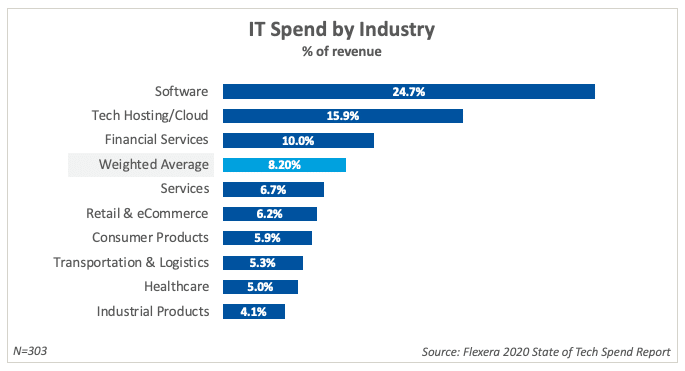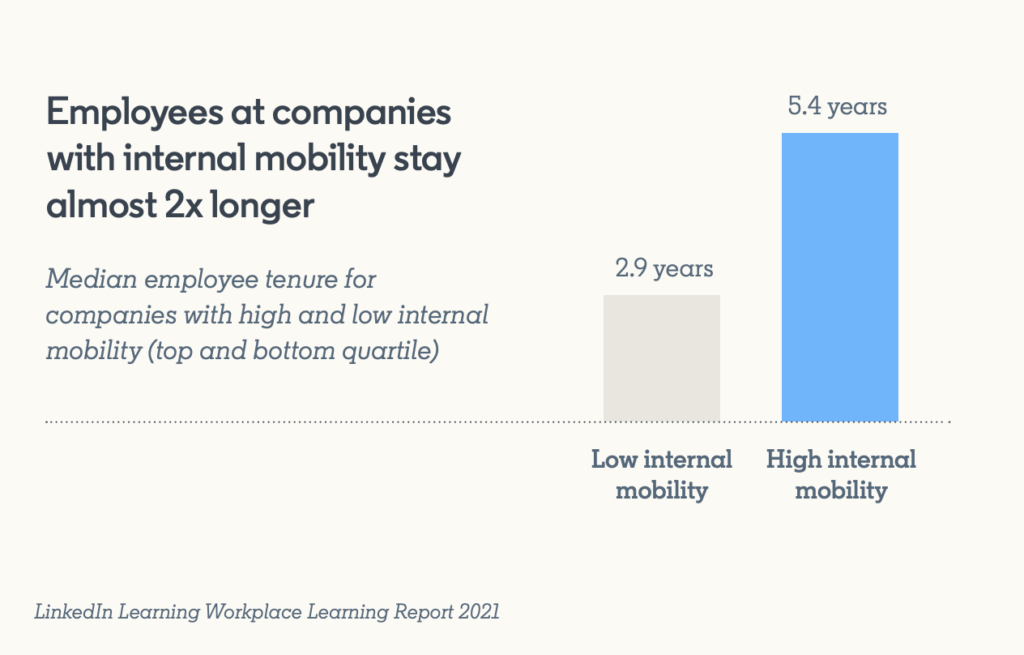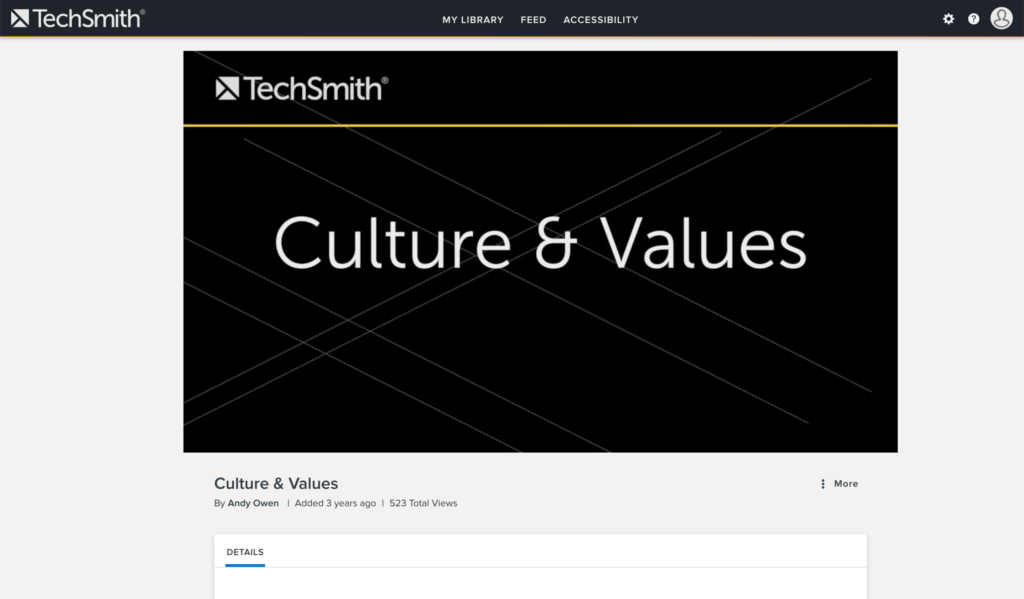Businesses that make knowledge sharing part of their organizational culture are at a distinct competitive advantage.
Gallup, the analytics and advisory firm, notes, “Knowledge management should be viewed as a key business strategy and given the same time and attention as any other IT or human resources initiative.”
The benefits of knowledge sharing are widespread, from increased agility and innovation to greater employee engagement. It’s also one of the best ways to ensure business continuity amid normal staff turnover.
But the term and even the practice itself can be a bit opaque, making it a difficult thing to prioritize and implement.
So, let’s draw a clearer picture of what exactly knowledge sharing is, the specific benefits, and identify opportunities for your organization to start doing it right now.
What is knowledge sharing?

Simply put, knowledge sharing is the exchange of skills, information, and expertise among a network or group of people.
In this context, there are two types of knowledge: explicit knowledge and tacit knowledge.

Explicit knowledge is the kind that can be easily recorded, codified, articulated, and accessed. It is often things that can be contained in documentation, manuals, tutorials, or how-to videos.
Tacit knowledge, which is complementary to the explicit form, is the wisdom, experience, insight, and intuition that builds the context around explicit knowledge. Those with tacit knowledge know why a particular practice is critical to a business or how a set of decisions was made.
The easiest way to share knowledge
No matter if you’re trying to share explicit or tacit knowledge, it can feel like a difficult task.
How does an organization make critical information easily accessible to everyone without spending an exorbitant amount of time or money?
The answer is to create a culture of knowledge sharing.
Organizations should encourage employees to share their knowledge and provide tools that make it easy to do so.
The nice thing is that you don’t need to implement an entire knowledge management system to get started. Some simple screen capture or screen recording tools like TechSmith Snagit and Camtasia are more than enough.
Download a free trial of Snagit!
Snagit is the easiest way to capture and share knowledge at work! Download a free trial to get started.
Get started for freeTools like Snagit and Camtasia help employees create job aids, screencasts, tutorials, and other informational content. Store and share these resources in a knowledge base, company intranet, or even simple collaboration spaces like Google Docs for quick and easy access.
The key is providing the tools and nudge of encouragement.
Three reasons to start knowledge sharing right now
When knowledge flows easily throughout an organization, numerous facets of the business thrive.
Here are three ways knowledge sharing has proven to benefit organizations.
1. Increase ROI of software tools and other business investments
In their 2020 State of Tech Spend, Flexera, an IT management provider, found that the average business spends nearly ten percent of its revenue on IT resources. Financial, cloud services, and software companies spend above the average with software companies, on average, spending almost 25 percent of their revenue on IT resources.

Maximizing ROI of these investments is imperative.
The best way to do that?
Encourage knowledge sharing. This will help ensure as many employees as possible understand the purpose of the tools and how to use them.
Deputize individuals with expertise or interest with new software or technology to create a few screencasts that demonstrate key elements. Sharing videos and making other resources available is an easy way to create a simple knowledge base.
The ideal outcome is that expertise flows freely throughout your organization, maximizing the ROI of your technology spend.
2. Ease challenges associated with employee turnover and “brain drain”
One of the biggest threats to a company’s efficiency is the turnover of knowledge and talent.
Here, again, Gallup provides insight, observing that we are currently or will soon see a large exodus of employees as the baby boomer generation reaches retirement age and leaves the workforce.
But it’s not just generational transition that organizations must navigate.
Today’s workforce is a transient one with the average tenure of an employee around 4.2 years and many employees being perpetually open to new opportunities.
Companies can create “knowledge levees” by having veteran employees record their collective knowledge in screencasts, how-tos, job aids, and other documentation. Make these resources available to other employees and you can easily fill a skill gap should one arise.
Implementing even a loose knowledge sharing system can prevent the loss of key information and experience when high performing or long tenured employees exit.
3. Support employee development, satisfaction, and retention
LinkedIn Learning’s Workplace Learning Report 2021 found that companies that provide opportunities for growth and mobility are more likely to retain employees for a longer period of time.
In fact, “According to LinkedIn data, employees at companies with high internal mobility stay almost two times longer than those who don’t.”

In other words, people want to work at a place where they have opportunities to grow, take on new challenges, and advance their careers. Gaining new skills by learning at work and on the job is one of the primary ways people do this.
Formal training programs play an important role here, but informal, day-to-day knowledge sharing can have a big impact, too.
Fostering a collaborative environment that encourages and facilitates effective knowledge sharing will be a huge boost to employee development and retention.
Three knowledge sharing opportunities at every organization
There are opportunities for knowledge sharing that are unique to some organizations and industries, but many are consistent everywhere you go. Here are three opportunities available to all organizations.
1. Onboarding and training content
Start knowledge sharing right from the beginning by lacing it into new hire onboarding and training content.
Convene a group of veteran employees to identify initial knowledge sharing opportunities. Then, have members of this group create resources that can teach new hires about company norms, systems, processes, and practices.

Use these resources to provide new employees with a curated course of learning in their first days on the job. They will appreciate the support, and your organization will benefit from the expedited time to productivity.
2. Software and systems rollouts
Organizations are always adding, updating, or replacing technology and systems. These transitions can create periods of inefficiency.
When you roll out new technology or perform a major update, prime the pump with supporting content. Create screencasts, how-tos, and other documentation to help employees get comfortable. Topics like account setup and how to use new features are great places to begin, but there will be lots more depending on your situation.
Often, creating support materials for technology rollouts can be a team effort, and you don’t need to tap individuals that are already experts to create resources.
Gather a group of stakeholders and task each with learning or understanding a particular element of the new system. They can then create the supporting materials for their assigned area.
A distributed and active approach to knowledge sharing, like the one explained here, is ideal.
3. IT and technical support (internal and customer facing)
IT and technical support teams are consistently overwhelmed.
Internally, they support a broad array of technology that keeps business running.
Externally, they ensure that your customers remain happy and satisfied by resolving issues as fast as possible.
Finding ways to manage and even lighten this heavy workload is critical. Naturally, knowledge sharing is an ideal way to do it.
Most IT and support teams encounter some questions more often than others. For many of these questions, a simple video or how-to document can provide an easy answer.
Provide your IT and support teams with simple knowledge capture tools. Then, offer time and encouragement to create and share resources that answer those common support queries.
Once resources exist, they can be used to respond to relevant requests, providing a shortcut that regularly saves time.
Two big reasons to lean in to knowledge sharing
I’ve got two final reasons every organization should make knowledge sharing a priority.
First, in today’s society knowledge sharing is commonplace. Countless online courses, YouTube channels, and social media accounts devoted to teaching new skills and knowledge. Many of your employees regularly engage in this ecosystem, albeit on topics of their own interest.
Second, the benefits of knowledge sharing quickly compound.
It aids efficiency throughout the company. When new employees get up to speed faster, veterans spend less time training and answering questions.
Additionally, employees are more willing to work on new, challenging things when they know knowledge and information is accessible. Companies that knowledge share become more innovative as a result.
The power of knowledge sharing is widespread, pervasive, and easy to start doing. What are you waiting for?
Simply put, knowledge sharing is the exchange of skills, information, and expertise among a network or group of people.
Knowledge sharing is a critical practice for organizations today. Its benefits are widespread, as it helps employees at all levels be more productive, ensures critical knowledge does not leave an organization, and helps companies develop and retain talent.
There are many ways to share knowledge in the workplace. One of the easiest is to use screen capture or screen recording tools to create screencasts, videos, and other resources that document key knowledge, processes, and information. These resources can then be accessed on-demand by employees when they need them.



Share